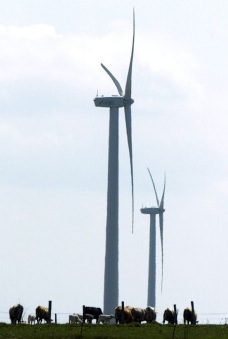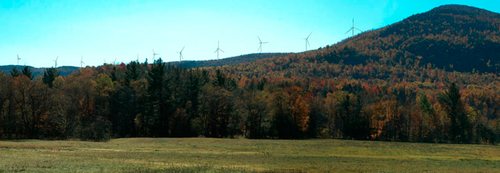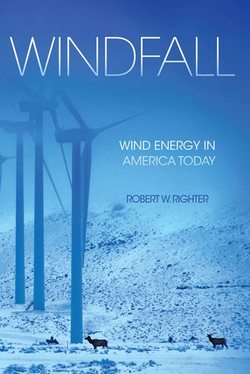The Oregon Health Authority has released a draft of its first “Strategic Health Impact Assessment on Wind Energy Development in Oregon.” The approach taken by Oregon health officials marks a subtle but significant departure from previous government reports on the topic. Most fundamentally, rather than being simply a literature review of past studies, this paper is a first attempt to sketch out the parameters by which health impacts of specific projects might later be assessed. The hope is that a final HIA would provide a basic understanding and framework that could allow future specific developments to look at local details, rather than repeating this big-picture overview. While it’s not all that clear how this framework for understanding the possible direct and indirect health effects will be used to actually assess on-the-ground responses in communities, the paper is notable for inclusion of several indirect pathways by which annoyance and sleep disruption can lead to physiological impacts, and also for its consideration of the impact of community discord on stress and well-being.
To begin with, the authors emphasize that “HIAs are guided by the World Health Organization’s definition of health as ‘a state of complete physical, mental and social well-being and not merely the absence of disease or infirmity.'” At the same time, the report makes clear that completely avoiding all health effects is not necessarily the goal, recognizing that economic development and public health are not in opposition to each other, but mutually inter-related, so that “the long-term public interest is best served when the interdependence of these goals is recognized and balanced through a process that empowers people to shape their lives and communities.” This investigation has particular timeliness in many Oregon communities, given that Oregon’s current 2500MW of wind capacity will double when projects under construction or approved are completed, and would more than triple if those in the permitting process now are built out.
The report follows many others in finding that direct impact on the body from the sound levels commonly received around wind farms is not likely, and that infrasound is generally below levels that are likely to be perceived. But unlike other reports, which often simply mention that annoyance is possible in response to audible wind farm sound, this one looks more closely at the health effects of stress and annoyance. In particular, it concludes: “Sound from wind energy facilities in Oregon could potentially impact people’s health and well-being if it increases sound levels by more than 10dBA, or results in long-term outdoor community sound levels above 35-40dBA.” And further: “The potential impacts from wind turbine sound could range from moderate disturbance to serious annoyance, sleep disturbance and decreased quality of life. Chronic stress and sleep disturbance could increase risks for cardiovascular disease, decreased immune function, endocrine disorders, mental illness, and other effects. Many of the possible long-term health effects may result from or be exacerbated by sleep disturbance from night-time wind turbine sound.”
Especially notable in this report is an entire section on “community conflict,” and the conclusion that “Community conflict over controversial siting or environmental decisions may contribute to or exacerbate this stress, and thus increase the risks of these negative health effects,” and that “rural communities may be disproportionately impacted by community-level conflicts because these conflicts may erode traditional sources of social and interactional support that community members rely on.”
Also strikingly, the report acknowledges that sound levels “at or near” regulatory limits can trigger these effects. Therefore, it recommends that “planners should evaluate and implement strategies to minimize sound generation from wind turbines when outdoor sound levels are at or near Oregon’s standard for wind turbine noise,” and suggest close consideration of site-specific factors that can affect sound propagation and perceived loudness, especially at night. The idea appears to be that this site-specific analysis can help to minimize the error factors in more generalized sound modeling (which can routinely lead to brief periods of sound well above that suggested by the models), thus reducing the likelihood of excess or “just at the limit” sound events.
These and other considerations of subtle, indirect effects, as well as differences in noise sensitivity and responses to wind farms among both individuals and communities, make this report far more comprehensive than most that have come before. It does not, however, make a case that all these impacts or health effects are necessarily likely to occur at levels that would preclude wind development. I recommend you read it in full to get a better sense of the overall context within which these innovative perspectives are included.
In particular, the report stresses that long-term average sound remains the best predictor of annoyance and thus possible health effects; it notes an EPA recommendation that if a sound source is new to an area, 5dB should be added to its sound output in assessing likely negative community responses, though again notes that problems are related to 5-10dBA increases in 24-hour sound averages caused by turbines, more so than short-term increases in sound.
And, while noting that “a small number of epidemiological studies have linked wind turbine noise to increased annoyance, feelings of stress and irritation, sleep disturbance, and decreased quality of life,” with “annoyance from wind turbine noise…more likely when levels exceed 35-40dBA,” the report also stresses that except for some sleep disruption and reports of lower energy, people closer to turbines may report a lower sense of how healthy they perceive their environment to be, or lower satisfaction with living conditions, but that there is generally “no difference between the two groups for social, psychological, and general health-related quality of life.” Still the report acknowledges the role (and limitations) of case series reports, which are more often simply dismissed by other similar reports. Finally, the report stresses the contributing role played by general attitudes toward the wind energy development, and encourages an open process that provides opportunities for widespread public engagement and a clear process for reporting noise or health issues if they arise, as well as urging developers to outline and communicate proposed mitigation techniques that can be employed should problems arise.
Oregon’s draft HIA can be downloaded here as a pdf; comments are being accepted through March 30 at this website.
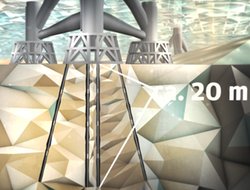

 I’ve also been invited to participate in a small, invitation-only symposium being convened by NOAA (National Oceanic and Atmospheric Administration) and BOEM (Bureau of Ocean Energy and Management) to gather feedback on
I’ve also been invited to participate in a small, invitation-only symposium being convened by NOAA (National Oceanic and Atmospheric Administration) and BOEM (Bureau of Ocean Energy and Management) to gather feedback on  “This one is actually a little different,” says Bigelow, “because you have this continuous noise and you have the wind changing, of course, but you have this continuous thumping and swishing, and that’s really irritating to people.” Bigelow notes that, “when you average it all out, wind turbines are going to be worse than traffic noise for annoyance, and that’s already been well established because of the character of it.”
“This one is actually a little different,” says Bigelow, “because you have this continuous noise and you have the wind changing, of course, but you have this continuous thumping and swishing, and that’s really irritating to people.” Bigelow notes that, “when you average it all out, wind turbines are going to be worse than traffic noise for annoyance, and that’s already been well established because of the character of it.” A 75-turbine wind farm that would span parts of three Michigan counties will be 9 turbines smaller, after Merritt Township Planning Commission voted to not issue permits to allow construction of turbines. The Merritt commission did grant permission for a substation and underground cables that are part of the wind farm’s infrastructure, but decided against allowing nine 466-foot turbines. Commissioners visited wind turbines in three nearby townships, and apparently based their decision primarily on concern for rural quality of life in their township. “They studied it thoroughy,” said John McQuillan, Merritt Township attorney. “That’s why the Planning Commission is appointed to make this decision.”
A 75-turbine wind farm that would span parts of three Michigan counties will be 9 turbines smaller, after Merritt Township Planning Commission voted to not issue permits to allow construction of turbines. The Merritt commission did grant permission for a substation and underground cables that are part of the wind farm’s infrastructure, but decided against allowing nine 466-foot turbines. Commissioners visited wind turbines in three nearby townships, and apparently based their decision primarily on concern for rural quality of life in their township. “They studied it thoroughy,” said John McQuillan, Merritt Township attorney. “That’s why the Planning Commission is appointed to make this decision.”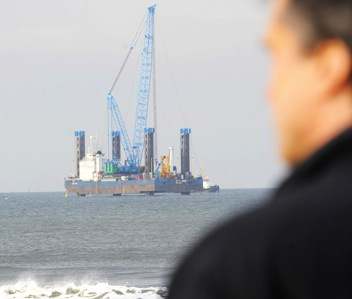 Construction of a wind farm a bit over a mile from shore near Redcar, on the northeast coast of England, has raised the hackles of local residents. At issue is the unexpectedly loud sound of pile-driving at the site; construction of the turbine foundations entails the construction of foundations that extend 32 m (about a hundred feet) into the seabed, according to
Construction of a wind farm a bit over a mile from shore near Redcar, on the northeast coast of England, has raised the hackles of local residents. At issue is the unexpectedly loud sound of pile-driving at the site; construction of the turbine foundations entails the construction of foundations that extend 32 m (about a hundred feet) into the seabed, according to 